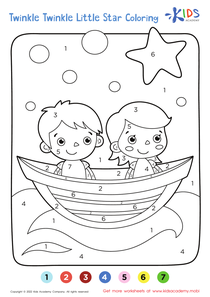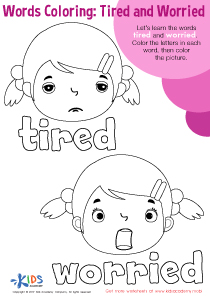Phonics practice Reading Worksheets for Ages 3-6
4 filtered results
-
From - To
Discover our engaging Phonics Practice Reading Worksheets designed specifically for children aged 3-6! These interactive and visually appealing worksheets help young learners develop essential reading and phonics skills through fun activities. Each resource is tailored to enhance letter recognition, sounds, and basic word formation, making learning enjoyable and effective. Perfect for parents and educators, our worksheets cater to various learning styles, fostering a love for reading early on. With easy-to-follow instructions and delightful illustrations, your little ones will eagerly explore the world of words. Start their literacy journey today with our Phonics Practice Reading Worksheets!
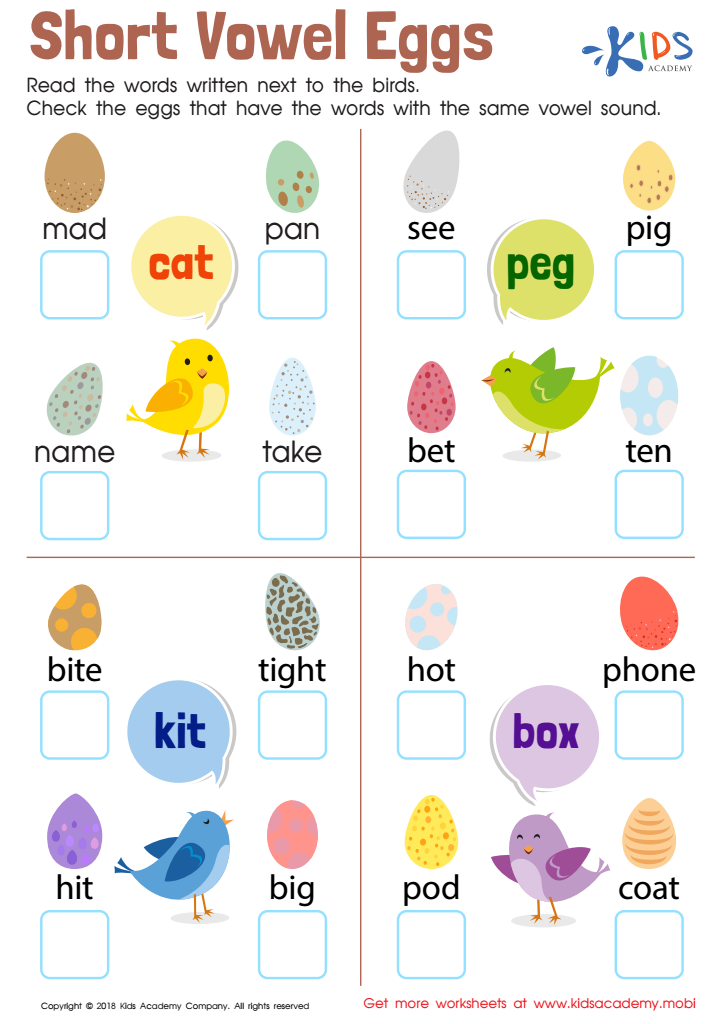

Short Vowel Eggs Worksheet
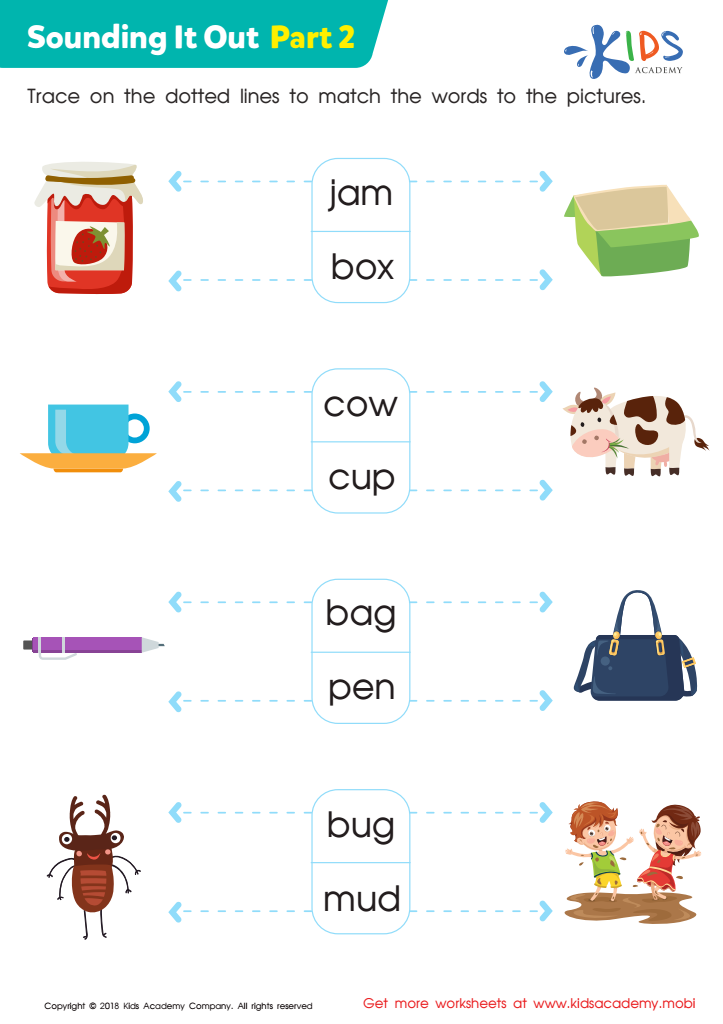

Sounding it Out: Part 2 Worksheet
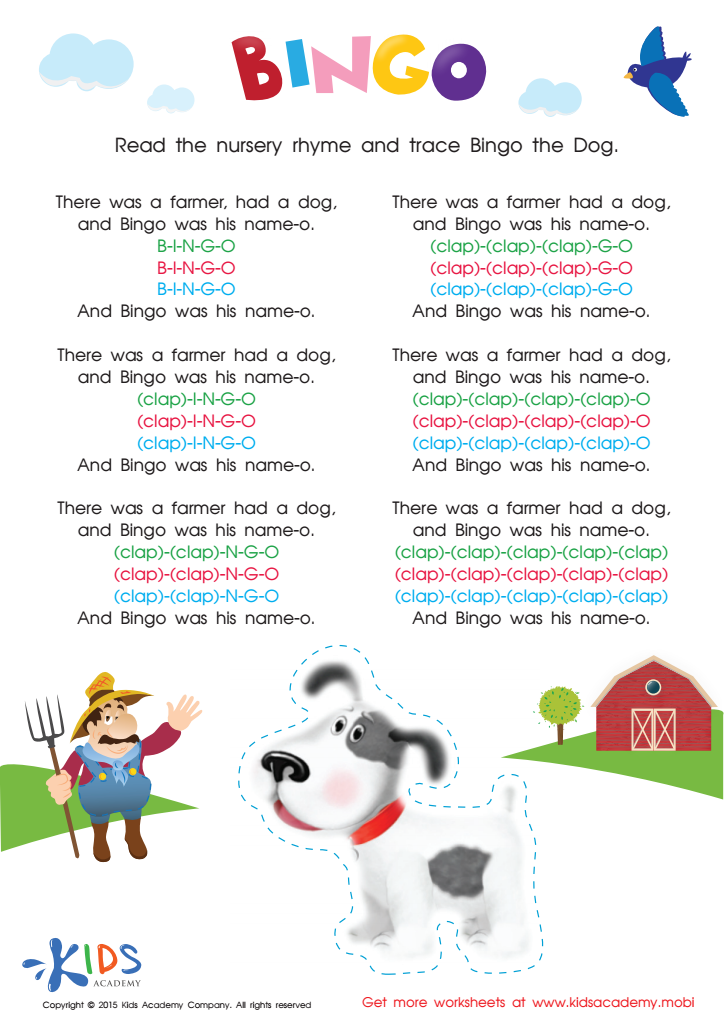

Nursery Rhymes: The Bingo Song Worksheet
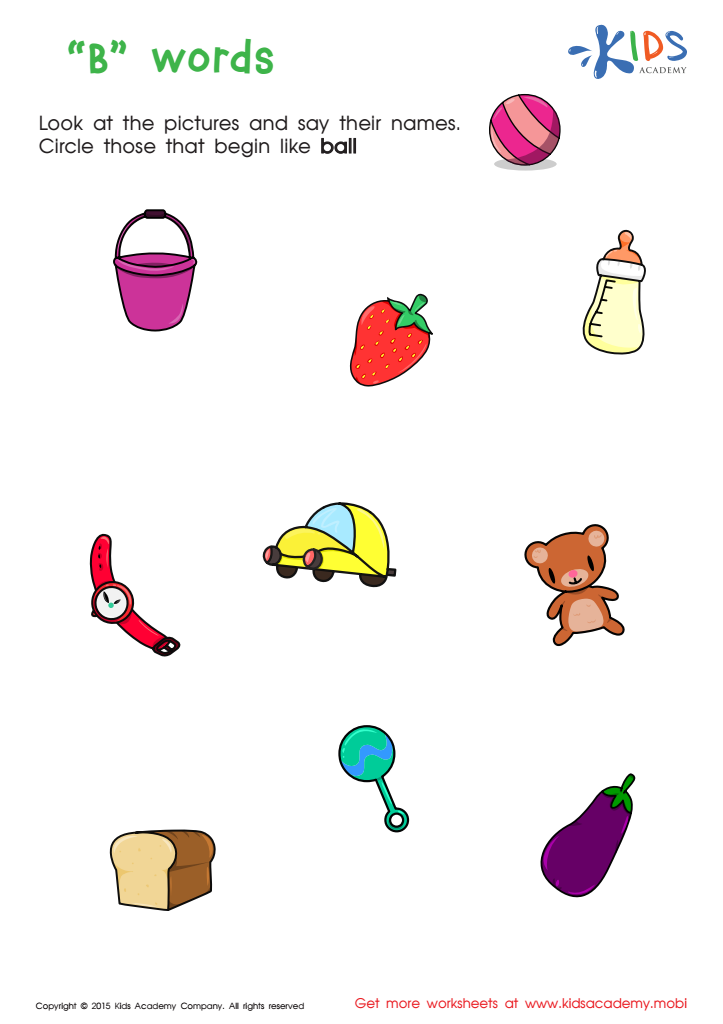

First Words Worksheet
Phonics practice is essential for children ages 3-6 as it lays the foundation for successful reading and literacy development. During these formative years, children are developing critical language skills, and phonics focuses on the relationship between letters and sounds—an understanding crucial for decoding words. By engaging in phonics activities, children learn to recognize letter patterns, blend sounds, and ultimately read independently.
Parents and teachers should care about phonics because it enhances reading fluency and comprehension. Early exposure fosters children’s confidence and love for reading, which can lead to a lifelong passion for literature. Furthermore, phonics practice can address early literacy challenges, ensuring that all children have the tools they need to succeed academically.
Additionally, research indicates that systematic phonics instruction significantly benefits children, especially those who may struggle with language or come from diverse linguistic backgrounds. By prioritizing phonics practices, parents and teachers empower children to become proficient readers, equipped for future learning.
Finally, reading is essential for children’s cognitive development and social skills. Phonics not only strengthens their ability to read but also supports overall communication skills, making it a critical focus for educators and families during these early years.
 Assign to My Students
Assign to My Students











